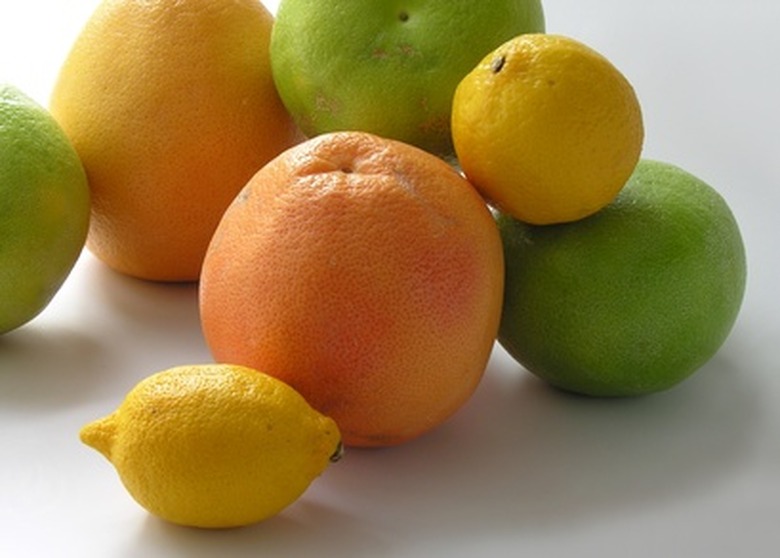Citrus Trees In Ohio
Citrus trees not only bear delicious fruit, they have glossy, evergreen leaves and fragrant white flowers in the spring. Citrus trees thrive in warmer climates such as United States Department of Agriculture hardiness zones 9 and 10. As most of Ohio falls in USDA hardiness zones 5 and 6, citrus should be grown in containers where it can be moved inside during the winter or grown inside all year long. Fortunately, there are many varieties of dwarf citrus to choose from that thrive in containers.
Lemon
The Improved Meyer lemon tree is one of the most popular citrus trees for indoor or patio growing. Fragrant, waxy white flowers cover this tree throughout the year, followed by a sweet, full-sized lemon. This lemon tree can withstand short periods of temperatures to 18 degrees F, but should be brought indoors to avoid damage to your tree. Although the Meyer lemon tree grows to 10 feet tall, it's easily pruned to a smaller height for ease of transport and space issues. Place your citrus tree where it will receive at least 6 to 8 hours of sunlight for optimal fruit production.
- Citrus trees not only bear delicious fruit, they have glossy, evergreen leaves and fragrant white flowers in the spring.
- Although the Meyer lemon tree grows to 10 feet tall, it's easily pruned to a smaller height for ease of transport and space issues.
Orange
If you've never picked a fresh orange from an orange tree, you've missed a delightful experience. Now you can enjoy that treat no matter where you live. Some dwarf orange trees, such as the Calamondin orange tree, only reach to 4 feet tall, making them ideal house plants. Provide at least 4 hours of direct sunlight for your miniature citrus every day, turning the pot so the sun reaches every part of the tree. Orange trees require water when the first 2 inches of soil are dry. If you keep your citrus tree indoors year around, you may need to pollinate the flowers for your tree to produce fruit. Simply take a cotton swab and rub it on the inside of a fully bloomed flower to gather pollen, transfer that pollen to another flower until each flower is pollinated.
- If you've never picked a fresh orange from an orange tree, you've missed a delightful experience.
- If you keep your citrus tree indoors year around, you may need to pollinate the flowers for your tree to produce fruit.
Kaffir Lime
Native to Indonesia, the kaffir lime is a common ingredient in Thai cuisine according to Citrus Trees Online. The fruit of the kaffir lime tree is small and bumpy, and although it's not very attractive, it has many medicinal and culinary uses and is extremely fragrant. Although the fruit is impressive, it's the leaves of the kaffir lime that are exceptional. These leaves have a strong flavor and are used in many culinary dishes. The kaffir lime tree has long thorns and should be handled with care, but it acclimates well to container and indoor growth. Growing to 10 feet tall, the kaffir lime can be pruned to a manageable size. It is hardy to 45 degrees F, and then should be brought indoors for the winter.
- Native to Indonesia, the kaffir lime is a common ingredient in Thai cuisine according to Citrus Trees Online.
- The kaffir lime tree has long thorns and should be handled with care, but it acclimates well to container and indoor growth.
